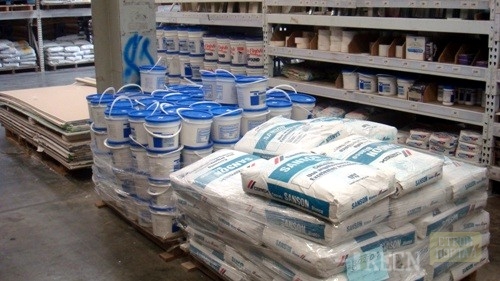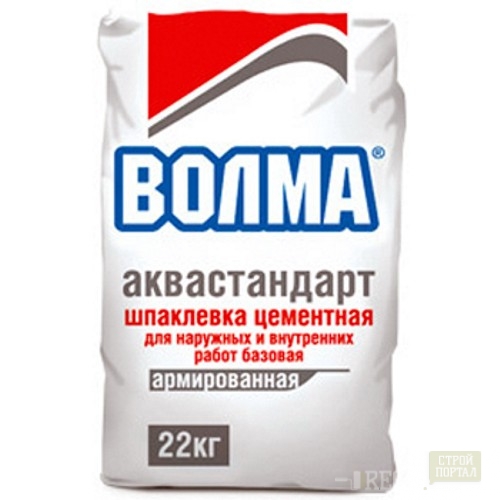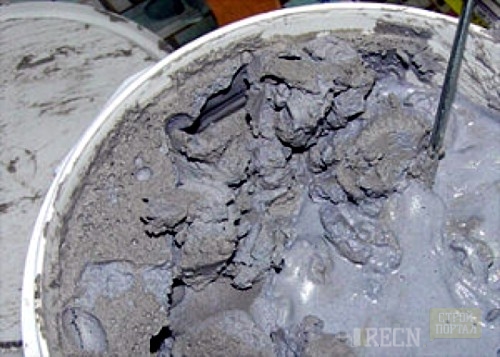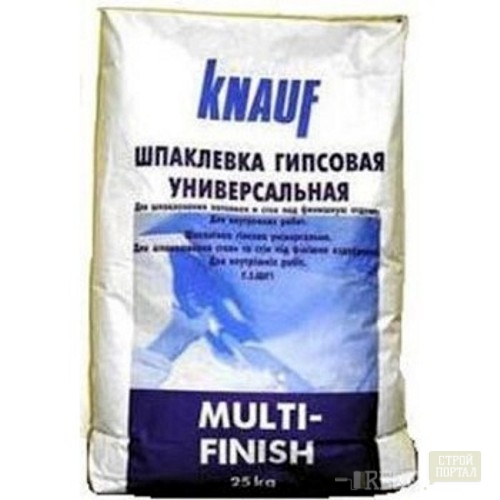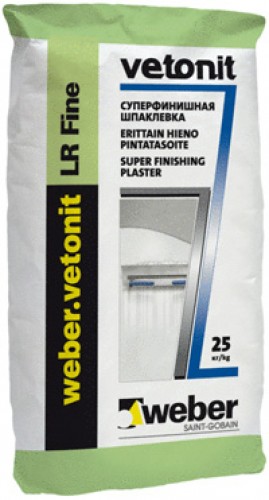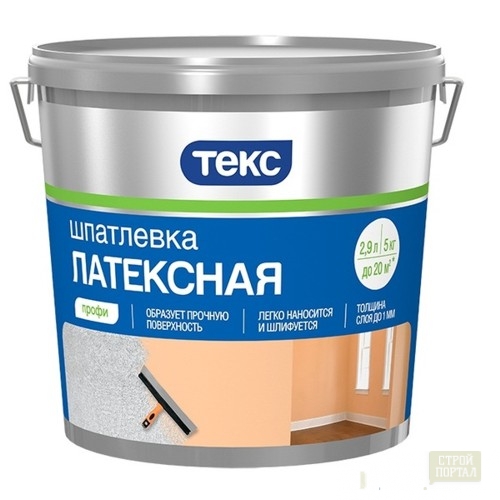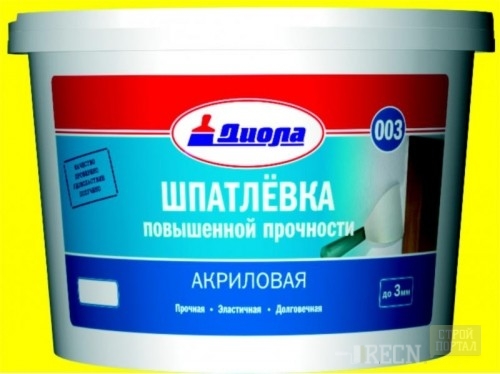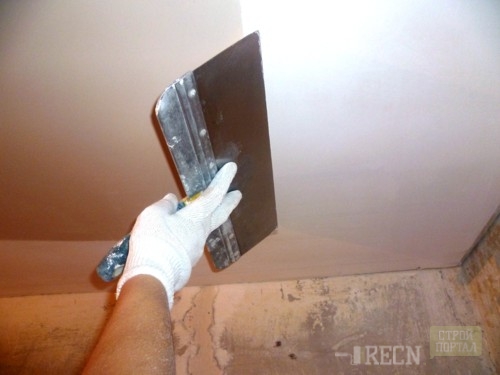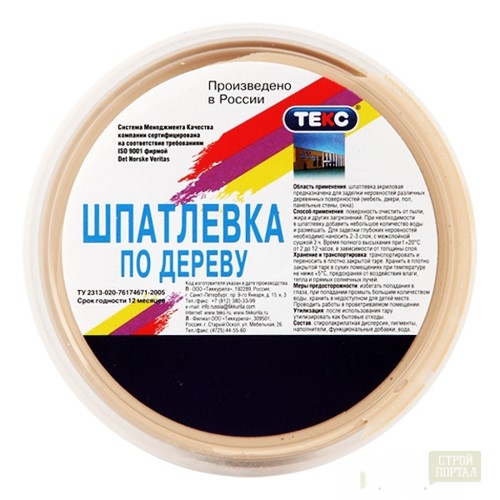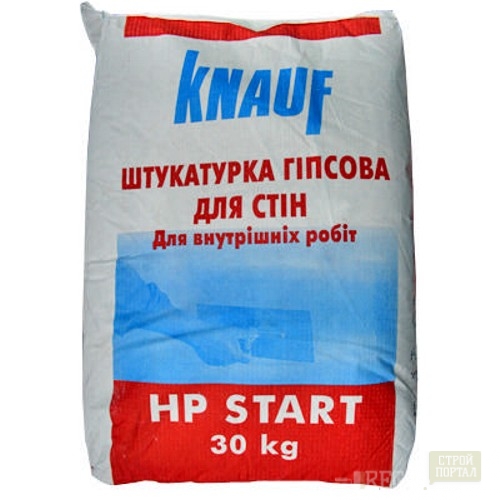
How to choose a spacure Building materials
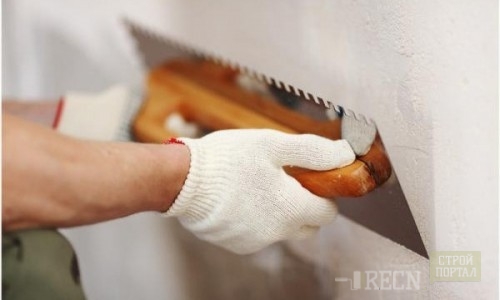
The modern building market is increasingly developing every day. New materials appear that allow repair work in a short time. So, if you need to buy putty, it can be found in almost every construction store. The choice of mixes is huge. Therefore, before you go to the store, you should decide which putty you need.
Content
Putty is a building material with which you can smooth out uneven surfaces (cement, concrete, plasterboard and other decorative coatings). Perhaps none of the person who had to make repairs in the room did not affect without this building material.
There are many types of putty mixtures. When choosing a putty, you need to consider the following - which surface it is necessary to align and eliminate defects.
Types of spacure
On the appointment of putty are divided into starting and finishing. Starting spike is designed to apply the first layer, which is always thicker than the next. The finishing putty is applied in two layers to prepare the walls to decorative decoration. If you plan to paint the wall, then you need to purchase fine-grained putty (100 microns).
The putty are dry and divorced (ready-to-use).
Dry spacure They are considered the most sought-after and are used to align the walls. Sold in paper bags of 25 kilograms or in packages weighing five kilograms and above.
The advantages of dry putty:
- you can independently control the thickness of the solution;
- just cook;
- convenient to transport and store;
- it has a long shelf life, regardless of air temperature.
Among the minuses of a dry putty mixture, builders noted:
- a certain amount of time is spent on the preparation of the solution;
- the finished mixture is quickly seized. It is impossible to prepare it in the future and large parties;
- drain dry putty needed according to technology. Otherwise, it will not respond to construction standards.
Finished spacure Produced on latex based or dispersion. Such a building material is for sale in large tanks or in buckets.
Advantages of finished putty:
- no need to spend time on making a solution and acquire additional tools. It is enough to open the container, take the right amount of solution with a spatula and proceed to work;
- ready solution can be stored an unlimited period. No need to follow the time, as it does not grab and will not deteriorate.
Cement spacure
Putclone is a solution that consists of three elements:
- Binder element - cement.
- Filler - sand.
- Solvent (shitter) - water.
The binding element can be cement of different brands. Two brands are more often used - 500 and 400.
The filler can serve as a natural separated and crushed sand. The composition of the sand affects the quality of the solution. So, if impurities will be present in the sand (about five percent), then such material is considered dirty.
For the preparation of a cement mortar for plastering of brick walls, it is better to use the sand of a large fraction (more than 2.5 millimeters). To align the surface, it is desirable to take the sand of the fine fraction (from 1.5 to 2 millimeters). If the sand is very small, then cracks may form on the treated surface when dried.
Water for breeding two components of cement putty should be clean. Temperature - no more than 20 degrees. The proportions of the three components may differ depending on which surfaces will be processed.
Standard solution is prepared according to such a scheme: three or four parts of the sand take on one part of the cement. Water is added as a solution gripping. It should not be too rare or too thick.
Advantages of cement putty:
- waterproof;
- it is possible to apply in rooms with high humidity.
Disadvantages:
- when the mixture dries out, then its shrinkage occurs. Therefore, it is often necessary to repeatedly apply a solution;
- cement mortar does not have elasticity;
- immediately or over time, small cracks may appear on the surface;
- badly apply on a smooth concrete surface (panel houses or monolithic reinforced concrete);
- low productivity. Even having experience, in eight hours you can reach only seven or eight square meters of surface;
- wooden surfaces cannot be placed: contact places with door openings and window frames, because the solution can wake.
Gypsum spacure
Mashed on the basis of gypsum. This material can "adjust" under the microclimate of any room. This means that if in the room it became wet, then he will "take" moisture. Or vice versa - if the air is dry, then the gypsum will "give up" it back. It turns out the natural circulation of moisture, which absolutely does not affect the health of people.
Plaster putty will allow you to get a flat surface without roughness. You can immediately begin the finish - painting the walls or shook wallpaper. In addition, the putty is widely used under painting. If you doubt what better to choose a putty under the wallpaper, ask the council advice.
The advantages of the material:
- you can apply painting directly to the plastered surface;
- has high thermal insulation qualities;
- dries quickly;
- fire-resistant;
- has an affordable price;
- without odor, it does not cause allergies.
Disadvantages:
- it is impossible to apply for finishing facades of the premises;
- undesirable to use indoors with temperature drops;
- easy to damage;
- cannot be used in pools and bathrooms;
- increases the corrosive properties of the metal (screws and nails begin to rust quickly).
Polymer spike
As part of such a putty, polymer binders are present, which give the plasticity solution. It has a high cost, and the consumption of putty will be small, in contrast to other mixtures.
The advantages of the polymer mixture:
- provides perfect result.
Minuses:
- has a high price;
- often you can buy a fake or marriage.
By purchasing a polymer putty, pay attention to the fraction. If it is very small, then you can get a smooth and smooth surface.
Polymer putty Wetonite.
Latex spacure
Comes in finished form. He was widely used in the decoration of sheets of plasterboard. If there were doubts about which putty to choose for drywall, experts recommend trying a mixture based on latex. It can be applied immediately to the surface. But here the opinions of specialists are diverged: some believe that the mixture can be plastering drywall structures, others claim that the putty is better to leave for the finish alignment.
Ready weight has a delicate consistency, it is easy to apply it. The putty layer should be no more than three millimeters. So that Latex retains its properties and not crackdown, you need to give the surface well to dry, protecting the room from drafts.
Acrylic spacure
It is used for outdoor and internal work with almost all types of surfaces, as well as to align concrete, brick walls and wooden floors. But the most acrylic putty is suitable for finishing work to bring the surface to the perfect state.
A mixture is applied with a very thin layer, just one millimeter is enough. And if the question arises, what to choose a putty for the ceiling is better to purchase acrylic. With it, you can make a practically mirror ceiling.
How to choose a putty on a tree
Two types of wooden surfaces are used to shock the wooden surfaces:
- on a solvent;
- water-based (acrylic).
The first option is used exclusively in the woodworking industry.
Acrylic wood putty is considered universal and safe to others. Working with such a material is solid pleasure, because it does not smell.
Advantages:
- without impurities;
- easy to work;
- after drying, it provides a solid coating that can be grinding and painted;
- provides good adhesion with wood, cement, concrete, brick, metal and plasterboard;
- a layer of putty durable, not crumbs;
- does not smell;
- hands and tools are easy to wash with water.
Disadvantages:
- if there is extraneous impurities in the putty (marriage), they can fall under the spatula and leave scratches on the surface.
How to choose a spike for walls
To finish surfaces inside the room, different putty can be applied. For example, to paint the wall after plastering, it is better to use a gypsum mixture, because it has a clean white color.
For decoration of walls with high humidity, polymer putty are suitable or cement.
When choosing putty, you need to know that if you plan to paint the wall, it should be one company with putty. If oil paint is used, then the putty mixture must be appropriate.
Putclone Knauff
The most popular plaster-based putter. Designed for finishing internal surfaces. The thickness of the layer should be from 4 to 15 millimeters. The mixture is sold in paper bags of 30 kilograms.
Spaklyka is suitable for outdoor work.
If you lay a layer of 1 centimeter, then the bag is enough for 4 square meters of surface.
Putclone KNAUF is designed for the initial leveling of the surface.
After the mixture is ready, it must be used for 15 minutes. Fully putty solidifies during the day. Provides good coating strength.
Path overview Watch video:




